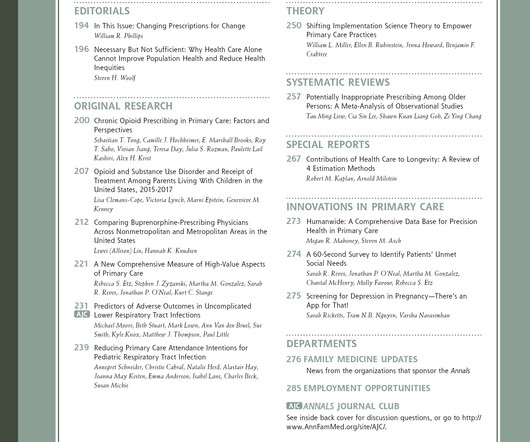The Relationship Between Cardiovascular Risk, Gender Identity, Sex Assigned at Birth, and Depression Among Transgender People [Big data]
Annals of Family Medicine
NOVEMBER 20, 2024
Context: Significant structural barriers exist concerning access to healthcare for transgender (TG) individuals. Setting or Dataset: Secondary analysis of the CDC state-specific Behavioral Risk Factor Surveillance System (BFRSS) surveys conducted from 2019 to 2022. Results: Transgender status (i.e.,












Let's personalize your content